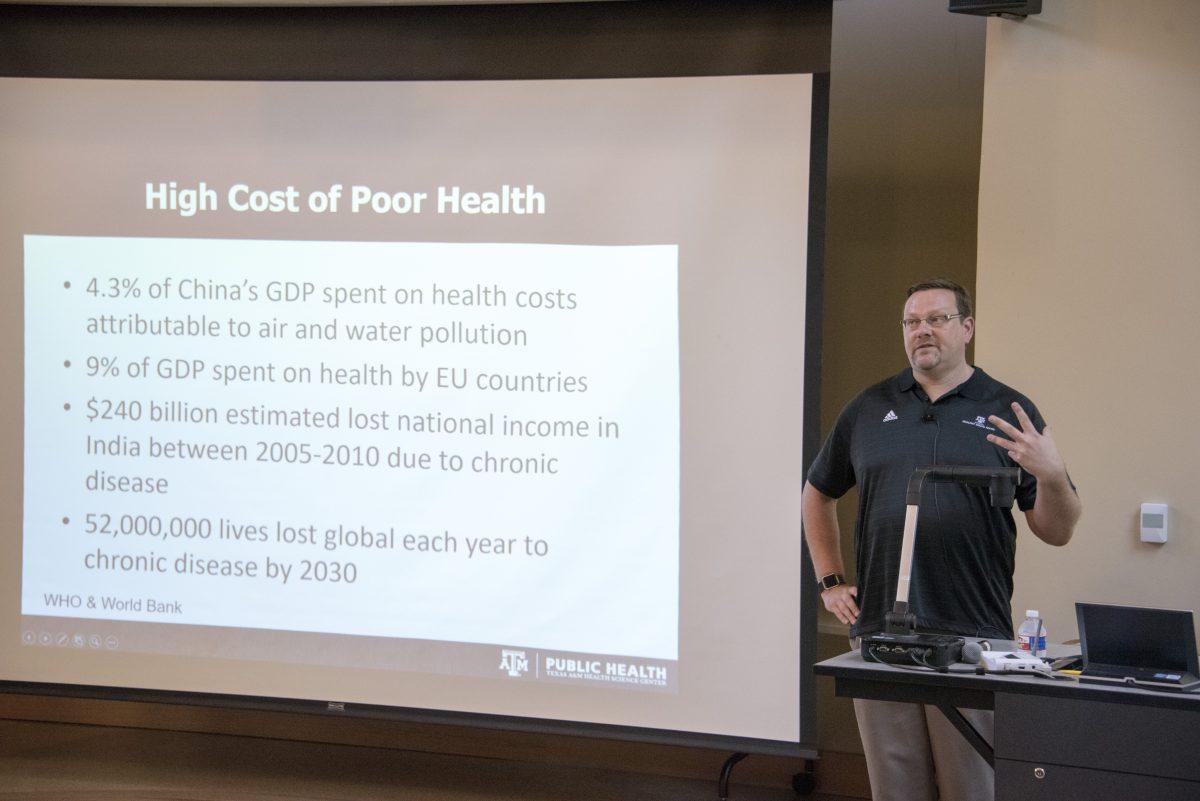This fall’s Architecture for Health lecture series will emphasize having speakers who have successfully delivered health care to large populations and the two month series kicked off Friday, Sept. 1.
The keynote address was given by Jay Maddock, Dean of the School of Public Health, where he addressed issues of health care in relation to population, zip code, violence, pollution and cost.
Architecture professor George Mann, holder of the Ronald L. Skaggs, FAIA Endowed Professor in Health Facilities Design, hosted this lecture series along with former students Ronald L. Skaggs and Joseph G. Sprague. Mann said a theme is selected for each series and the reason for this topic is to improve health care, as it has an important impact in our lives.
“It is usually a theme that embraces broad issues that link improving health and health facility design,” Mann said. “Winston Churchill said, ‘We shape our buildings and then they shape us’. We aim to transmit the latest cutting edge state of the art of information for the benefit of the public. The lectures are videotaped and open to the general public.”
One concept Maddock focused on was location of the population compared to the accessibility of medical facilities of professionals, giving the example that rural areas have a higher death rate because they don’t have close access to medical sites.
“Zip code is more important than genetic code,” Maddock said. “More than 2.2 million children die from a diarrheal disease each year, which could be cured with access to medical facilities.”
Obesity was also an issue discussed in the lecture and Maddock said that while the United States spends $147 billion annually for the obesity epidemic, he thinks the money should be spent differently.
“They spend lots of money on curing [obesity], when they should be spending more on prevention,” Maddock said. “From 1995 to 2010, the percent of states with obese people went from 15 percent to 30 percent. That is a huge huge shift in obesity in a span of 15 years and sadly it keeps going.”
One potential solution to widespread obesity that public health professionals have created is a walking path on streets that encourages people to walk or bike by adding lights, nature and easy accessibility.
Maddock worked in Hawaii for 15 years to increase physical activity for the residents and said that an implementation of a bike program helped dramatically.
“We did a bikeshare program there,” Maddock said. “They actually took the entire King Street, which is the main street through Honolulu and they got rid of a lane and put in a bike lane with a full on separation from the rest of the road.”
Samira Traore, public health junior, attended the lecture and said it was a great way to interact with the dean and understand the connection between urban planning and public health.
“I think it is something that is very overlooked, just like [Maddock] mentioned, how often do you go to a doctor versus walking into a building,” Traore said. “These are things that people never think about and it is interesting to me, because it is such a huge part of my life. I wanted to understand how things I do in my everyday life would impact me and what I could do about it, as a public health major, later on in my career.”
The next lecture in the series, “The Art of Health Care: Using Our Surroundings to Improve Public Health,” will be delivered by Robert Morrow, Southeast Texas Market President of Blue Cross Blue Shield of Texas.
The complete list of lectures is available online through through the architecture department.
Lecture series focuses on bringing healthcare to the public
September 10, 2017
Photo by Photo by Cassie Stricker
Texas A&M will be hosting several lectures informing others about the relationship between health and architecture.
Donate to The Battalion
Your donation will support the student journalists of Texas A&M University - College Station. Your contribution will allow us to purchase equipment and cover our annual website hosting costs.























